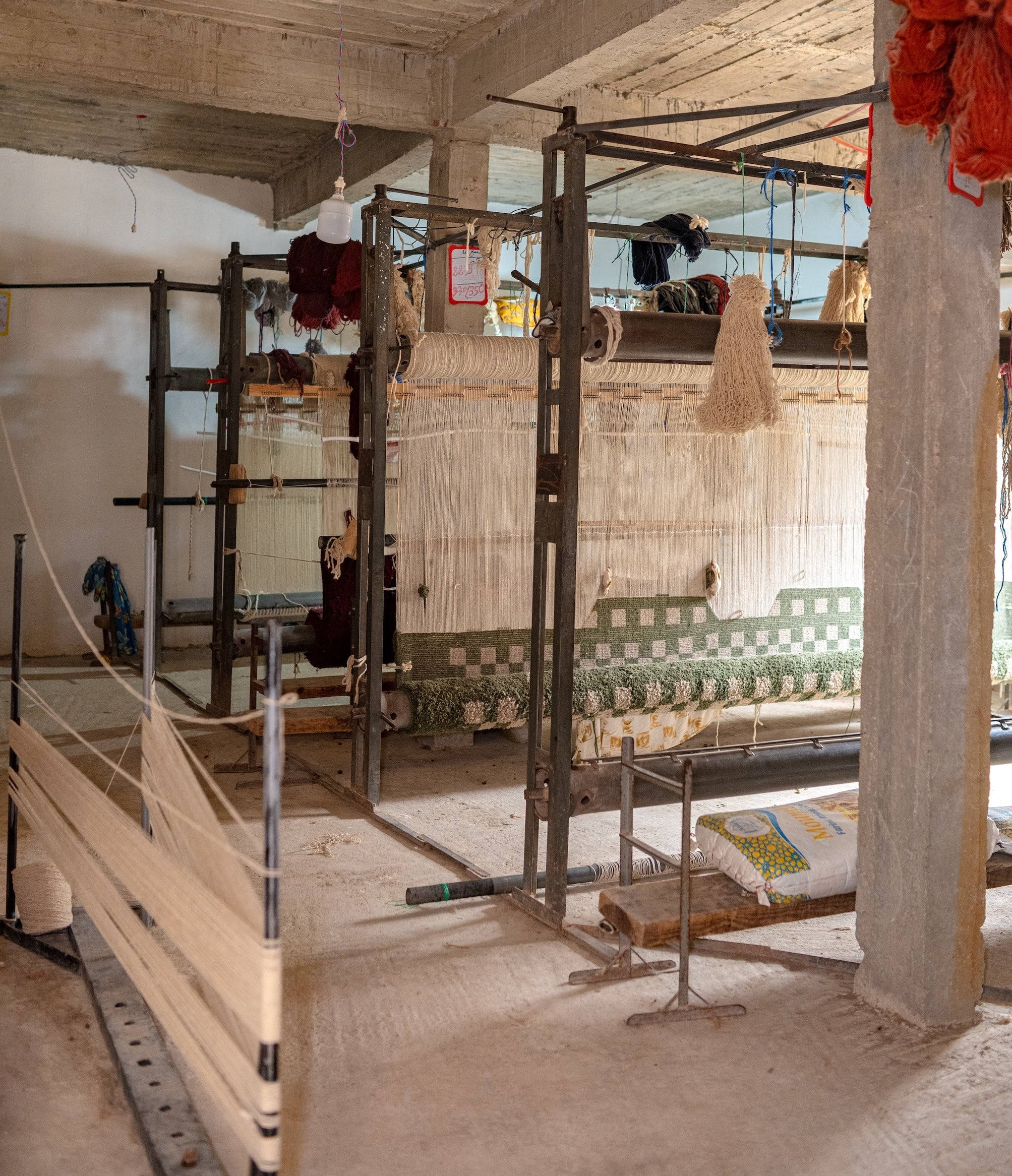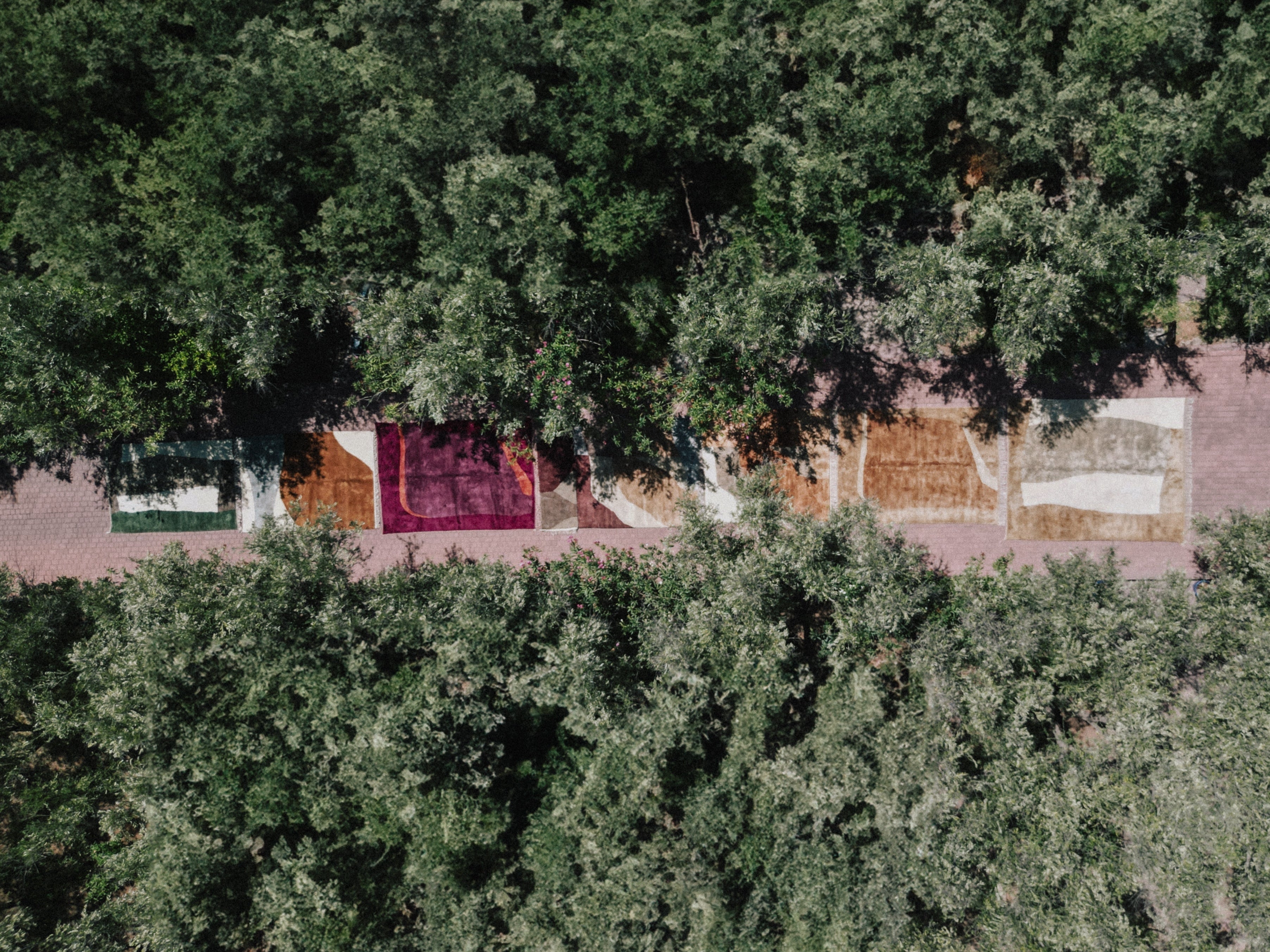Supporting Moroccan Artisans with Nest
Salam Hello was a proud advisor for Nest’s first-ever Moroccan micro-accelerator in partnership with Sana Jardin.
Since 2019, Salam Hello has made it our mission to celebrate the artisans who make the pieces we source: highlighting their techniques, symbolism, and rich traditions.
In July, co-founder Mallory Solomon brought this mission to Nest’s Moroccan micro-accelerator providing tailored educational training to five artisan groups.
The micro-accelerator program had a strong social impact and sustainability focus, and its key audience was five women-led artisan groups/cooperatives based near Marrakech, Morocco.
- Natural Color Cooperative Angouan
- Coopérative Art Design
- Tamgounssi Weaving Centre
- Ifassen
- Tifout of Ait Ourir
Each selected group was given access to three on-demand webinar courses, individual mentorship sessions, a professional product photography shoot in Marrakech, and a $1,000 USD grant to drive business growth and support artisans on their journey to become vital players in the international marketplace.
Each course had a different focus of education for the artisan groups:
- Investing in our foundation: people & community
- Investing in our foundation: growth & marketing
- Investing in our foundation: planet & responsible products
Mallory and Salam Hello spearheaded the course Investing in our Foundation: People & Community, covering pathways towards greater economic inclusion of women through skills development, craft and cultural preservation.
Below are some insights from our presentation. Our hope is that by sharing this information with a wider network, more cooperatives will be able to benefit from this roadmap.
1. On Setting Your Vision: How to Unify and Uplift Your Cooperative
Insight: When cooperative members understand and believe in their vision, they are more likely to be engaged in their work. A compelling, aligned vision ensures that all members of the cooperative are working towards a common goal. This unity of purpose fosters cohesion and collaboration, enabling members to work together and manage resources, time, and materials effectively.
Here’s where to start:
- Define Clear Objectives: Begin by articulating the overarching mission and vision of the cooperative. What are the values and principles guiding its existence?
- Identify Your Goals: Identify specific, measurable, and achievable goals that the cooperative aims to accomplish.
- Review and Adapt: Regularly review and refine the goals. Flexibility and adaptability are key to maintaining relevance and effectiveness over time.
2. On Engaging and Empowering the Community
Insight: By engaging with one another and sharing skills, artisan groups can preserve and celebrate this cultural heritage, ensuring its continuation for future generations.
Here are some ways to engage and empower the community:
- Skill sharing: Whether it's mastering a weaving technique, learning a traditional design pattern or perfecting how best to gather the needed materials for a dye, everyone in the cooperative should be encouraged to share their knowledge and passion with fellow members to ensure the talent of not only today but tomorrow.
- Mentoring: Determine the members who are proficient in specific skills and designate them as mentors to oversee a group of mentees over a set time period to learn and transfer the skills.
- Beyond the Cooperative: Encourage the broader community to enroll in these programs, fostering both a wider cooperative membership and opportunities for the next generation.
- Bring in outside experts: Welcome outside experts / specialists to help enrich a cooperative’s expertise in a particular field.
3. Connecting Technology to Craft
Insight: By leveraging technology, artisans can not only access global markets, but more importantly, engage and preserve traditional techniques. Utilizing these new tools to showcase traditions, techniques, and broader cultural history will open cooperatives up to a wider audience as well as increase collaboration opportunities.
Here are some ways to leverage technology:
- Think about creating a hub of video tutorials that can continue to keep the legacy alive beyond your lifetime.
- Topics to include: Document traditional techniques. Showcase how a rug is woven or and/or a color is achieved. Create a step-by-step guide and explain the symbolism and significance behind each component.
4. The Next Generation: Harnessing Youth Perspectives
Insight: It's important to bring the younger generation into the conversation. By leveraging their native digital skills to assist in filming, taking pictures, and curating content, artisans will then be able to bridge the gap between tradition and innovation. In turn this will empower and help understand how to carry forward the rich cultural heritage and tradition.
Here are some ways to engage youth:
- Design workshops for the younger generation to teach the cooperative about new technology platforms/tool.
- Invite youth into the ongoing skill sharing programs and workshops.
- Teach the youth handcraft techniques. Pairing younger individuals with mentors who in turn can have an intergenerational collaboration.
We’re excited by our continued partnership with Nest and the prospect of expanding their accelerators to other regions and cooperatives.
If you have any questions on how you can help with Salam Hello or Nest’s mission as well as ways you can participate please send us a note at hello@salamhello.com and artisan@buildanest.org.
Photographed by Amira Azzouzi.




